Switch to the mobile version of this page.
Vermont's Independent Voice
- News
- Arts+Culture
- Home+Design
- Food
- Cannabis
- Music
- On Screen
- Events
- Jobs
- Obituaries
- Classifieds
- Personals
Browse News
Departments
-
Education

Scott Official Pushes Back on Former State…
-
News

Burlington Budget Deficit Balloons to $13.1 Million
-
Education

Senate Committee Votes 3-2 to Recommend Saunders…
- Court Rejects Roxbury's Request to Block School Budget Vote Education 0
- Norwich University Names New President Education 0
- Media Note: Mitch Wertlieb Named Host of 'Vermont This Week' Health Care 0
Browse Arts + Culture
View All
local resources
Browse Food + Drink
View All
Browse Cannabis
View All
-
Culture

'Cannasations' Podcaster Kris Brown Aims to 'Humanize'…
-
True 802

A Burlington Cannabis Shop Plans to Host…
-
Business

Judge Tosses Burlington Cannabiz Owner's Lawsuit
-
Health + Fitness

Vermont's Cannabis Nurse Hotline Answers Health Questions…
-
Business

Waterbury Couple Buy Rare Vermont Cannabis License
Browse Music
View All
Browse On Screen
Browse Events
Browse Classifieds
Browse Personals
-

If you're looking for "I Spys," dating or LTRs, this is your scene.
View Profiles
Special Reports
Pubs+More
Magic Hat Leaves Behind a Transformed Craft Beer Industry in Vermont
Published July 1, 2020 at 10:00 a.m.
In the annals of Vermont's Magic Hat Brewing, there was never a more spectacular misfire than Ale of the Living Dead. Brewed in 2001 for the annual Night of the Living Dead Halloween party that the company used to throw at its brewery — originally in Burlington and later in South Burlington — the ale featured a piece of raw garlic in each clear bottle. It was every bit as revolting as it sounds.
"That was the great debacle," Magic Hat cofounder and original brewer Bob Johnson said of the garlic beer, giving credit/blame for the potable abomination to cofounder Alan Newman. "I fought that one tooth and nail," Johnson recalled. "I was like, 'This is not a good idea.'"
Newman recalled that, within hours of the first delivery of garlic beer to Pearl Street Beverage in Burlington and Beverage Warehouse in Winooski, he was called to come take the cases back. "They said every bottle they'd sold had come back to them," Newman said. "It was undrinkable."
Ale of the Living Dead became the stuff of legend. In later years, when curious customers asked about it at the Artifactory — Magic Hat's retail store at the brewery — employees were encouraged to explain that it was meant for cooking, not drinking. (It wasn't.) A secret back stock of the concoction was sometimes used to settle high-stakes bets among brewery staff: You lose, you chug.
Ale of the Living Dead is undoubtedly Magic Hat's most infamous, and funniest, failure. Yet its very existence testifies to the craft brewing innovation — whether reckless or fearless is open to debate — that the company has engaged in since its founding in Vermont in 1994.
Now Magic Hat approaches a milestone that puts the future of that tradition of innovation in question. Since 2012, Magic Hat has been part of FIFCO USA, which is a subsidiary of Florida Ice & Farm Co., a publicly traded conglomerate based in Costa Rica that operates in more than 15 countries.
On June 16, the brewing conglomerate announced that it will move all Magic Hat production to its Genesee Brewing headquarters in Rochester, N.Y. As of July 1, the grand Magic Hat experiment in Vermont is officially over — though some would argue that it ended at least a decade ago.
The news of Magic Hat's departure from Vermont after 26 years made local and national headlines. Some of that interest is a product of the brewery's national profile and uncommon longevity. For others, the move is an opportunity to reflect on how much has changed in the booming craft beer industry since 1994 — and whether those changes ultimately left Magic Hat behind.
From Jinx (a peat-smoked Scotch ale) to Wacko (a beet beer) to Braggot (a braggot), Magic Hat's creations have routinely stood out in that industry like, well, a sore Thumbsucker (a barrel-aged Russian imperial stout). Especially in the company's independent early years, the brewers were willing to try pretty much anything.
"When it totally missed, they had laughs about it," author and Yankee Brew News columnist Adam Krakowski told Seven Days. "They embraced experimenting and an acceptance of failure, because they were so groundbreaking and experimental that every one can't be a home run."
Many of Magic Hat's offbeat offerings were home runs, though — so many, in fact, that by 2009 it was the eighth-largest craft brewery in the country. The most notable hit was its apricot-tinged flagship beer, #9, a revolutionary brew in its time. While the company's eight-pointed star — a dingbat in its logo between "Magic" and "Hat" — has fallen over the years, especially among beer enthusiasts in its home state, it was once among the most successful craft breweries anywhere.
Magic Hat's insistence on doing things differently was fundamental not only to brewing but to every aspect of the company. Its tap handles and packaging were curious and eye-catching, its distribution strategies forward-thinking and provocative. Whimsical, Lewis Carroll-like wordplay colored everything from sales sheets to the sayings on the underside of bottle caps.
"Bob and Alan always looked at Magic Hat as this blank canvas where they could really paint outside the lines," said Lisa Kelly, who worked for the company from 1995 to 2017. Creative expression and individualism were not only encouraged, she continued, but considered essential to the brewery's entrepreneurial ideology and its success. "It was our personalities that created this brand," Kelly said.
Forty-three of Magic Hat's 46 Vermont employees will lose their jobs when the brewery moves to Rochester, though Burlington's Zero Gravity Craft Brewery is in talks to rehire some of them, according to Justin McCarthy, Zero Gravity's director of brewing operations and a Magic Hat alum. That company plans to expand from its Pine Street quarters into Magic Hat's longtime facility on Bartlett Bay Road in South Burlington.
And, just like that, all that will remain in Vermont of one of the largest and most influential craft breweries in the state's history will be a unique and complicated legacy. Unless perhaps someday, tucked away in a dark corner, Zero Gravity employees find a 20-year-old bottle of garlic beer.
Atheist Ale
Newman is befuddled by the swell of well wishers who've approached him to eulogize Magic Hat and offer condolences.
"In my mind, Magic Hat died in 2010," he said flatly. That's the year he sold Magic Hat to North American Breweries in Rochester, a company established by the New York City investment firm KPS Capital Partners.
"They're a private equity company, and they make money by stripping out expense and flipping," Newman, 74, explained. That's exactly what happened. Through North American Breweries, KPS gutted Magic Hat, decimating its sales and marketing forces in particular. In 2012, North American Breweries was sold to FIFCO.
Newman recounted the sale to KPS in unflinching detail in his 2011 autobiography, High on Business: The Life, Times, and Lessons of a Serial Entrepreneur. As he tells it, it's a lurid tale filled with dramatic double crosses and deceit, as well as bad actors taking advantage of a company that had over-leveraged itself at the worst possible time — just before the stock market crash of 2008. That's when Magic Hat purchased Pyramid Breweries, a financially troubled Seattle company, and formed Independent Brewers United, or IBU.
A KPS spokesperson called Newman's version of events "absurd," noting that in meetings with KPS he "negotiated for himself, among other things, a free annual keg of beer for life.”
In Newman's telling, his hands were tied in selling Magic Hat, and he made "far less money than people assume I did — and far less than some other people did." Worst of all, he added, "I lost control of a company I spent 17 years building.
"To me, it was dead. And I mourned it; I grieved back in 2010, 2011. I moved on," Newman continued. "But I've been shocked ... because a lot of the people expressing sadness and appreciation [now] are the people who just fucking hated us back in the day."
His words reflect the fact that, while Magic Hat was once one of the nation's top craft breweries, it was also one of the most polarizing.
"Craft is fascinating," Newman observed, "because they've always had a thing where success means you've sold out, and therefore you shouldn't be doing this."
Over the years, some Vermont beer aficionados have traded their Blind Faith and Fat Angel for sought-after brews from celebrated local microbreweries, such as the Alchemist's Heady Topper or Hill Farmstead Brewery's Edward. But even beer snobs acknowledge that Magic Hat is important to the history of beer in Vermont for reasons well beyond the number of barrels it could pump out in a given year — 185,000 at its peak in 2011.
For starters, if there hadn't been a Magic Hat, Vermont might not currently have the most breweries per capita in the nation — 14.2 per 100,000 people and counting, according to the Brewers Association.
"Their legacy is a very important one," said Krakowski, the beer columnist. He's authored or coauthored several books on brewing history, most recently last year's Burlington Brewing: A History of Craft Beer in the Queen City, with Jeff S. Baker II. "Magic Hat laid a lot of unacknowledged groundwork in making Vermont where it is today in craft beer," Krakowski said.
"We brought craft beer into the modern age," Newman declared.
When he and Johnson founded Magic Hat in 1994, there were just a few production craft breweries in the state, most notably Otter Creek Brewing, Long Trail Brewing and Catamount Brewing. Vermont brewing legend Greg Noonan opened Vermont Pub & Brewery in 1988, and a smattering of smaller breweries could be found in the Green Mountains.
But the state's craft beer industry was a long way from puberty, let alone the explosive mature growth it would eventually achieve. At press time, the Vermont Brewers Association's website listed 61 members. That doesn't even include three new breweries that are "work[ing] to open during the pandemic," according to Jordan Barry's June 24 story in Seven Days, which suggested that "It might take an apocalypse to stop new breweries from opening in Vermont."
In 2018, Vermont's beer industry produced nearly 350,000 barrels, making an economic impact of $362 million. Nationally, those raw figures put the state at or below the middle of the pack in terms of production and revenue. But per capita, Vermont's beer industry ranks first in gallons brewed per adult and second in economic impact.
"At the time, I really thought the industry was crowded," Newman confessed, tossing up his hands, as he remembered back to 1994. "I know that's laughable now, and even I can't say it with a straight face. But it's true."
Newman's beer baron contemporary, Otter Creek founder Lawrence Miller, had the opposite opinion. He, Newman and Johnson, as well as the heads of Catamount and Long Trail, formalized the Vermont Brewers Association in 1995, building on groundwork laid by Noonan.
"I imagined there would be room for probably 20 more breweries," said Lawrence, who sold Otter Creek in 2002. Since 2010, Otter Creek has been owned by Long Trail, which itself was sold to a private equity firm in Massachusetts, Fulham & Co., in 2006.
While Newman's concern seems quaint in 2020, given that seven new breweries probably opened in Vermont while you were reading this sentence, it did provide him and Johnson with something of a guiding principle: Brew for the people, not just the aficionados among them.
Newman, who is famously eccentric and outgoing, and the more reserved Johnson were something of an odd couple, at least on the surface. But they shared a philosophy around beer. Both were turned off by the dogma of the budding craft beer industry. "We felt that craft beer was too precious," Newman said. He mimicked a beer ad, "Using only the finest, all-natural ingredients..."
"We wanted to be complementary and be respectful to beer styles to a certain degree," said Johnson, who was a certified beer judge and brewed briefly at Otter Creek before starting Magic Hat. "But, at the same time, we weren't brewing for the Great American Beer Festival. We weren't brewing to get medals. We wanted to brew beer that was delicious."
Johnson also aimed to brew beer that complemented food, such as his first creation, an Irish-ish red ale called simply Bob's 1st Ale. "I always said that beer needs to be at the table as much as hanging out with your friends at the bar," said Johnson, who left Magic Hat amicably in 2003. He now co-owns Scratch Baking in Portland, Maine.
"I was in beer for economic development, mission and values," Newman said. "I learned to love beer, don't get me wrong. But beer was not a religion to me. And at the time, for everybody in the industry, it was about religion."
Before opening Magic Hat, Newman and Johnson took a fact-finding tour of 33 breweries from Seattle to California and realized that "everyone was doing the exact same thing," Newman said. "Everybody's labels looked alike. Everybody's tap handles looked alike. All the beers were named after a geographical location or a person. So we decided that we were going to do everything different."
"Very pointedly, they did not use the Vermont brand," Miller said. In his view, Magic Hat's contrarian approach to marketing and beer style "upped the game for everybody and showed us what was possible. They were the inspiration to color outside the lines."
"We didn't have any great clarity on what 'different' meant," Newman said. "But one of our great strategies was that, when everyone was going down one path, we'd say, 'OK, we'll go this [other] way.'"
A Performance in Every Bottle
Magic Hat's full official name is the Magic Hat Brewing Company and Performing Arts Center. The Night of the Living Dead parties were one manifestation of that latter, lesser-known designation. But for New Englanders, the annual Magic Hat Mardi Gras parades in downtown Burlington were the company's defining showcase, in more ways than one.
From 1995 until 2019, when it morphed into a stationary party, Magic Hat Mardi Gras just kept growing, becoming one of the biggest annual events in New England. At its pre-FIFCO peak, the parade drew more than 30,000 visitors to Burlington to catch beads in the dead of March and drink metric shit-tons of Magic Hat beer. The cold may have put a damper on New Orleans-style nudity, but the level of boozy debauchery often rivaled that of Saint Patrick's Day in Burlington.
The weekend-long festivities were a boon to local restaurants in a traditionally quiet season. Over the years, the parades raised more than a quarter million dollars for charities such as Planned Parenthood and Vermont CARES.
The Mardi Gras celebration was also a shrewd bit of marketing. But, like all good marketing, it didn't feel like it.
The parade was the brainchild of Stacey Steinmetz, who became Magic Hat's first employee in September 1994. Technically, she was hired as a sales rep. But, especially in the company's early years, her duties spilled over into many facets of the business, from cleaning draft lines in the morning to selling beer during the day to running bar promotions at night.
"Then I had the genius idea of doing events like Mardi Gras," Steinmetz said with heavy irony.
She explained: The first Night of the Living Dead, held at the brewery HQ, upset Burlington bar owners because Halloween was traditionally one of their most lucrative nights of the year. So Steinmetz devised Mardi Gras as a way to "create a new holiday in Burlington to give back to the bars, but it could be for everybody."
She schemed up ways of getting local merchants, media and nonprofits involved, developing symbiotic relationships. While those businesses and organizations benefited from the parade's exposure, Magic Hat gained a presence all over downtown Burlington. And the bars made a killing.
Steinmetz recalled that her husband, Glenn Walter, owner of the Burlington brewpub Three Needs, used to say that Mardi Gras "marked the day when the students decided they've worked hard enough for the semester and now it's time to party again."
The first parade featured 15 floats on Church Street. Steinmetz "beseeched" Magic Hat's best customers to build floats and devise "stupid-clever ideas" for each, she recalled. For Nectar's, the downtown nightclub famous for live music and gravy fries, that meant tossing frozen French fries from the float.
"Which didn't go over terribly well with the Church Street Marketplace," Steinmetz conceded, referring to the merchants' association responsible for the pedestrian thoroughfare. "But the birds were happy."
As was Newman, who admitted he was initially skeptical of the idea of a Mardi Gras parade in March in Vermont.
"When we started," he said, "nobody [in the craft beer industry] understood the concept of event marketing."
The success of Mardi Gras offered a blueprint for some of Magic Hat's most important marketing innovations. While the company's event planning started at home, it would eventually lead Magic Hat into a controversial growth and distribution strategy of prioritizing markets outside Vermont at the expense of its home turf, Newman acknowledged.
Magic Hat became a fixture on the East Coast music festival scene; most notably, it was the first craft beer to have a significant presence at the massive Bonnaroo Music & Arts Festival in Tennessee.
"People asked us all the time why we wasted energy and money at Bonnaroo, when Tennessee was so far from Vermont or anywhere we distributed at the time," Newman said. His answer: "All those people come from somewhere. And when they go back to wherever that is, they're gonna look for Magic Hat."
And they did. From its inception, Magic Hat grew with uncommon speed. By the late '90s and early 2000s, as it expanded throughout the Northeast, the company was growing at the phenomenal rate of 25 to 30 percent nearly every year, according to Newman.
"We felt that we should always be able to do that," Newman said. "Unless something went terribly wrong."
Through the Looking Glass
When Carri Uranga interviewed for a job at Magic Hat in 2000, she sat across a table from Johnson and longtime general manager Steve Hood (she thinks; memories made at breweries tend to be fuzzy, especially two decades later).
At the end of the interview, Johnson posed a simple but crucial question to Uranga: Do you like beer?
"I was like, 'Do I like beer?'" Uranga recalled. She then lifted up her shirt to expose a modest beer belly.
Uranga worked at Magic Hat for six years, first as the "curator of tchotchkes," aka the retail manager, and then as the "voice," answering phones and managing the Magic Hat offices. Many brewery employees received fanciful job titles. Steinmetz was the "supreme dreamer and schemer." Accountant Sue Dorey was the "evil accounting lady." Sales and marketing director Michele Noonan was alternately the "manager of mumbo jumbo" and "high priestess of peddling." CEO Martin Kelly was the "potentate, pilot and primary prestidigitator."
Magic Hat's graphic design was even more fantastical. With molten churns of red and orange, the label of #9 had a hypnotic effect. Ditto the icy black and blue swirls of Blind Faith. For its HI.P.A. label, Magic Hat commissioned the San Francisco artist Stanley Mouse, famous for his psychedelic rock posters in the 1960s. Jinx featured a winking amoeba composed of a trio of interlocking hearts.
"We saw packaging as a way to tell a story," said Lisa Kelly, Magic Hat's "lead creationary cultivator," or creative director. (She's no relation to Martin Kelly, though she did meet her husband, Chris, when they worked together at Magic Hat.) "We wanted the customer to really work to be in on the secret."
From its silly job titles to its eye-catching design aesthetic, Magic Hat projected an aura that distinguished it in the craft beer industry, especially in the late '90s and early 2000s. Uranga said that air of singularity was evident inside the brewery, as well.
"I always felt like we were different," she said. "One of our taglines was about being unique and distinctive, and I felt like that was true."
Magic Hat employees were an exceptionally close-knit community. "Everybody was in a band," Lisa Kelly said.
"It's almost like our whole lives revolved around Magic Hat," Uranga recalled. "It was sort of like a cult, but not an unhealthy one." She paused, then added, "Well, maybe sort of."
If Magic Hat was "sort of like a cult" internally, externally it cultivated a kind of benign fanaticism, too. That made the Artifactory something like holy ground. Magic Hat disciples made frequent pilgrimages to Bartlett Bay Road, including Krakowski, who in the early 2000s would regularly travel from college in New York to the Artifactory.
"Magic Hat was really the gateway to craft beer for me and a lot of others," he said.
The company's original Flynn Avenue brewery was hard for such visitors to find, tucked away in back of an old industrial complex. Newman recalled, "We had a sign that got stolen so often, we finally stopped replacing it."
The act of seeking out Magic Hat became central to the company's identity. Magic Hat moved to its South Burlington location, a former lumberyard, in 1997. With the rebranding of the on-site retail store as the Artifactory in 2003, Newman and the brewery's other creative heads sought to replicate that sense of mystery and discovery in the new location.
When you entered the Artifactory, it took a few minutes for your eyes to adjust to the dim lighting, while the aroma of malted barley tickled your nose. Long and cavernous with high ceilings, the room offered no natural light. Instead, colored floodlights revealed corrugated steel walls bathed in curious hues and T-shirt racks made from old culvert pipes. Especially for the uninitiated, the effect was disorienting, which was exactly the point.
"When people came in, they were like, 'Oh, yeah. This is Magic Hat,'" Newman said. "It was what their fantasy was like."
With a steampunk aesthetic, the Artifactory was more demented fun house than staid tasting room. It hid a treasure trove of sometimes-bizarre merchandise alongside T-shirts and coozies — such as condoms. ("Magic hats," get it?) A long, tunnel-like tour ramp wound up through the guts of the building. As visitors climbed, white light beckoned from the darkened hall to a bright platform overlooking the entire brewery, as if they were Dorothy stepping into Oz.
"It was like the living, breathing entity of this brand we had created," Steinmetz said. "It was like you were traveling somewhere. It was an event in itself.
"We wanted to create experiences for our customers," she continued. "That was our intent with everything that we did."
The Artifactory, said Newman, "taught me the value of having a home for a brand that really speaks to what that brand is about. I would argue that we really helped start the [craft beer] tourism business."
That might sound like a bold claim, but Krakowski, for one, agrees.
"I think Catamount, Vermont Pub & Brewery, Otter Creek and Magic Hat were the ones that had name recognition outside of Vermont and were drawing people to craft beer," he said. "Now it's escalated to the point that the craft beer is drawing people to Vermont."
Revolution 9
Newman believes the explosion in craft beer tourism that he helped create is, ironically, at least partially responsible for torpedoing Magic Hat. A prime example of how the company may have become a victim of its own success is the history of its enduring but polarizing flagship brew, #9.
Johnson, 60, finds the common perception of #9 as a "fruit beer" amusing, though he acknowledged that it was inspired by a beer from Seattle's Pyramid Breweries that contained apricot essence, just as #9 would.
"But it was a straight-up wheat beer," Johnson said of Pyramid's brew. "And I always thought they used too much apricot essence." He wanted to see how that essence would work in a lighter, cleaner style.
Essence, Johnson explained, is a pure extract with barely any flavor or sweetness. Its effect is almost entirely aromatic. He devised a recipe for a pale ale that brought sweeter malt characteristics forward by reducing hopping. Hence #9's tagline: "Not quite a pale ale."
"If you had that beer without the essence, it probably would have tasted out of balance, a little more malt sweetness and asking for a bit more hop," he said. "But when you add the perceived character, the aromatics, that little bit of sweetness in the beer gave you a perception that it was the apricot that was giving you that sweetness."
In other words, he said, #9 was "a trick of the mind on the palate."
Its name was also a mystery, alternately rumored (with the help of Magic Hat staff) to have been inspired by the Searchers' "Love Potion No. 9," "Revolution 9" by the Beatles, and the jersey number of baseball greats Ted Williams and Roger Maris, among other tall tales. The name was derived from the Fiat X1/9 roadster, revealed the car buff Newman.
The beer drew derision in certain brewing circles as "a girlie beer," Johnson recalled. But whether #9 earned that scorn by offending brewing tradition or simply aroused jealousy with its success is a fair question.
"From 1995 to 2010, 15 years, it was double-digit growth for #9," Lisa Kelly said. "I remember clearly, someone asked me that when NAB bought us: 'Were you guys really growing double digits? Because we're not doing that now.'"
"I never liked #9," said Bill Mares, who considers himself an "emotional godfather" to Magic Hat and co-owns the small Burlington "beer blendery" the House of Fermentology with Todd Haire of Burlington's Foam Brewers. "But what did I know? It went on to make up 40 percent of their sales and really opened the whole fruit-flavored beer market."
Brewers at the time, Johnson said, "didn't take [#9] too seriously." But, he added, "every single one of them would have rolled over for the distribution.
"We were in the business to sell beer," he continued. "#9 turned into a very sellable beer. And I think it got a lot of people in craft beer, also."
Newman described #9 as the gateway beer for an entire generation of craft drinkers — including, he suggested, the righteous beer purists who have maligned it, and by extension Magic Hat, for two decades.
"You know they're all closet #9 drinkers," he said.
But about a decade ago, the craft beer market shifted, and so did the fortunes of #9. National sales figures confirm that craft customers, many of whom were weaned on #9, are moving away from regional breweries like Magic Hat and toward microbreweries — defined as breweries that produce fewer than 15,000 barrels per year.
In 2018, microbreweries represented 80 percent of the growth within the entire craft brewing industry — which encompasses regional breweries, microbreweries and brewpubs. In 2019, craft beer accounted for more than a quarter of the $116 billion U.S. beer market, according to the Brewers Association. Regional breweries still comprise most of that, but microbreweries are clearly ascendant.
Put another way: In 2010, the year North American Breweries acquired Magic Hat, there were 1,800 breweries in the U.S. In 2019, there were more than 8,300 — 1,600 of which had opened in the past two years alone. That growth reflects consumers' thirst for local over regional beers.
So do Magic Hat's numbers — which, according to Newman, took a nosedive over that same decade.
FIFCO doesn't release sales or production figures to the public, but Newman has seen them and said they're dire — though a nondisclosure agreement with FIFCO prevented him from divulging specifics.
Kelly confirmed anecdotally that sales of #9, in particular, dropped precipitously after 2010 as customers moved on to newer beers from smaller producers.
Thus the very trends that Magic Hat fostered led to its decline.
"I do sometimes wonder if I could have figured it out," Newman said of keeping Magic Hat solvent in a drastically shifting market. "I'm not quite arrogant enough to say that I would have. But I do wonder."
'A Culture of Curiosity'
As a businessman and entrepreneur, Newman, who now co-owns the South Burlington music venue Higher Ground, has an impressive track record. Pre-Magic Hat, he cofounded the prominent Vermont company Seventh Generation. In 2011, Boston Beer recruited him to run Alchemy & Science, a subsidiary brand incubator. Just this week, he announced he is taking over as the owner of the Burlington music venue and restaurant ArtsRiot, to serve, as he put it, "the caretaker" of the South End cultural hub.
Related Magic Hat Cofounder Alan Newman Buys ArtsRiot
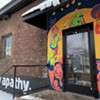
Magic Hat Cofounder Alan Newman Buys ArtsRiot
By Dan Bolles
Bite Club
So you could have done worse than betting on Newman to save Magic Hat if given the chance. But recapturing the magic would have been a tall order.
Magic Hat employees who worked for the company before and after the sale to North American Breweries in 2010 almost universally point to a drastic change in culture and identity: from freewheeling and fun to, as one former staffer put it, "a company that had to keep telling everyone how cool they were."
"It was a real and noticeable difference," Kelly said. She and others stress that not all of the changes were bad. For example, the brewery received needed upgrades, and certain operations were streamlined and facilitated. The company's brewers were still encouraged, at least in recent years, to experiment, though most of their efforts flew under the radar of beer enthusiasts.
"Some of our experimentation might have been slightly muted by perception challenges the brand has faced," said current head brewer Chris Rockwood, who has been with Magic Hat since 2007. "But it's been here."
Still, there was no mistaking the change in atmosphere before and after 2010.
"Alan walked around the brewery barefoot until the bitter end," said McCarthy, the Zero Gravity brewer who, in two stints, worked for Magic Hat for 11 years between 2000 and 2013. "You went from that to getting demerits if your safety glasses weren't on."
Newman believes that North American Breweries and FIFCO never fully understood what made Magic Hat what it was.
"We built a culture of curiosity, a culture of constant innovation and constant change," Newman said. "I don't think they ever really got that."
If you need an example of the disconnect between the culture and philosophy Newman and Johnson created and what Magic Hat became under FIFCO, look no further than its most recent new release.
Newman was always adamant about avoiding craft brew clichés, one of the most egregious of which, in his view, was naming beers after people or geographical locations. What did Magic Hat unveil in early June? Bartlett Bay, a margarita gose, named for the brewery's South Burlington address.
However, Newman's aversion to identifying Magic Hat with its Vermont setting makes it easier for FIFCO to move the company.
"This is sort of the natural evolution," said Otter Creek's Miller, who is now an independent business consultant and served as Vermont's secretary of commerce from 2011 to 2014. "Not having used the Vermont brand gives the owner flexibility to move without having to reposition the brand."
Even as the brewery leaves Vermont, the state's booming beer scene still reveals samples of Magic Hat DNA everywhere.
Prominent alumni of "Magic Hat University," as Fiddlehead Brewing founder Matt Cohen calls it, are scattered throughout the local beer industry. The highest concentration of them might be at Cohen's own Shelburne brewery. Cohen, who brewed for Magic Hat from 1999 to 2010 before opening Fiddlehead in 2011, currently employs seven former members of Magic Hat's "Bru-Tang Clan" — the brew staff's moniker.
"Magic Hat really pushed the envelope of what beer could and should be," Cohen said. But he thinks that changed even before 2010. He traces the brewery's decline to 2008, when Magic Hat acquired Pyramid Breweries.
"It's like the Grateful Dead," continued Cohen, an avowed Deadhead. "They wrote some great songs in the '70s, played the shit out of them in the '80s, and by the '90s it was all gone."
Cohen and Fiddlehead general manager John Ravell, who worked at Magic Hat from 1996 to 2007, said they've applied the lessons they learned there to opening and growing Fiddlehead.
"I learned what to do at Magic Hat," Cohen said. "But I also learned what not to do."
Perhaps the most important lesson for Cohen is what he called the "art of selling beer."
"A mistake that a lot of breweries made back then, and that still happens today, is that breweries produce beer for brewers," he explained, echoing Johnson. "And that's not always the type of beer that's going to excite and energize the base.
"That was Magic Hat's strength," Cohen continued. "They did not brew to style to win medals. They made beer for consumers and to teach people what better beer could be."
Zero Gravity's McCarthy thinks that aspect of Magic Hat's legacy endures in the beer made by Magic Hat alums all over the state, from Queen City Brewery to von Trapp Brewing to Foam Brewers and many others.
"The impact on the brewing community is pretty profound," he said. "That's a lot of knowledge to be shared from the amount of time people spent there. And that goes a long way."
If Magic Hat was a university, then Haire, the Foam Brewers cofounder, was its dean. He brewed at Magic Hat from 1997 to 2011 and became its master brewer when Johnson left. Many former Magic Hat brew staff interviewed for this story specifically credited him with preparing them to succeed in the beer industry.
"He formed my opinion that work could be important, not just something you do," said Josh Waldman, who brewed at Magic Hat in the early 2000s and is currently the head brewer at Elysian Brewing in Seattle. Waldman implements many practices he learned from Haire, from cross-training brewers to be able to do any job in the brewery to hiring people with limited or no experience who could be trained from square one.
"It was a great brewery to grow up in," Haire said of Magic Hat. "I think a lot of people worked really hard to build that brewery, and the culture was so good at the time that we would have done anything to make it happen. Magic Hat was a great time before HR got involved."
Magic Hat's corporate evolution and resulting cultural decline encourage him to wax philosophical. "They used to say, 'If we're not growing, we're dying,'" Haire recalled. "I still think about that from time to time. Like, where were we going? And was anybody happy when we got there?"
This story has been updated to include Alan Newman's recent purchase of Artsriot.
The original print version of this article was headlined "Vanishing Act"
Got something to say?
Send a letter to the editor
and we'll publish your feedback in print!
Tags: Business, Magic Hat, Alan Newman, craft beer, brewing, brewery, Video
About The Author

Dan Bolles
Bio:
Dan Bolles is Seven Days' assistant arts editor and also edits What's Good, the annual city guide to Burlington. He has received numerous state, regional and national awards for his coverage of the arts, music, sports and culture. He loves dogs, dark beer and the Boston Red Sox.
Dan Bolles is Seven Days' assistant arts editor and also edits What's Good, the annual city guide to Burlington. He has received numerous state, regional and national awards for his coverage of the arts, music, sports and culture. He loves dogs, dark beer and the Boston Red Sox.
More By This Author
Latest in Business
Speaking of...
-

Lot Six Brewing to Open in Jeffersonville
Apr 16, 2024 -

Brattleboro’s Hermit Thrush Brewery to Close
Apr 2, 2024 -

ArtsRiot in Burlington Reopens With Pizza and a Bar
Mar 29, 2024 -

Waterbury’s Craft Beer Cellar Gets a New Name — and a Bar
Feb 27, 2024 -

Winooski’s Vermont Homebrew Supply to Close
Jan 16, 2024 - More »


























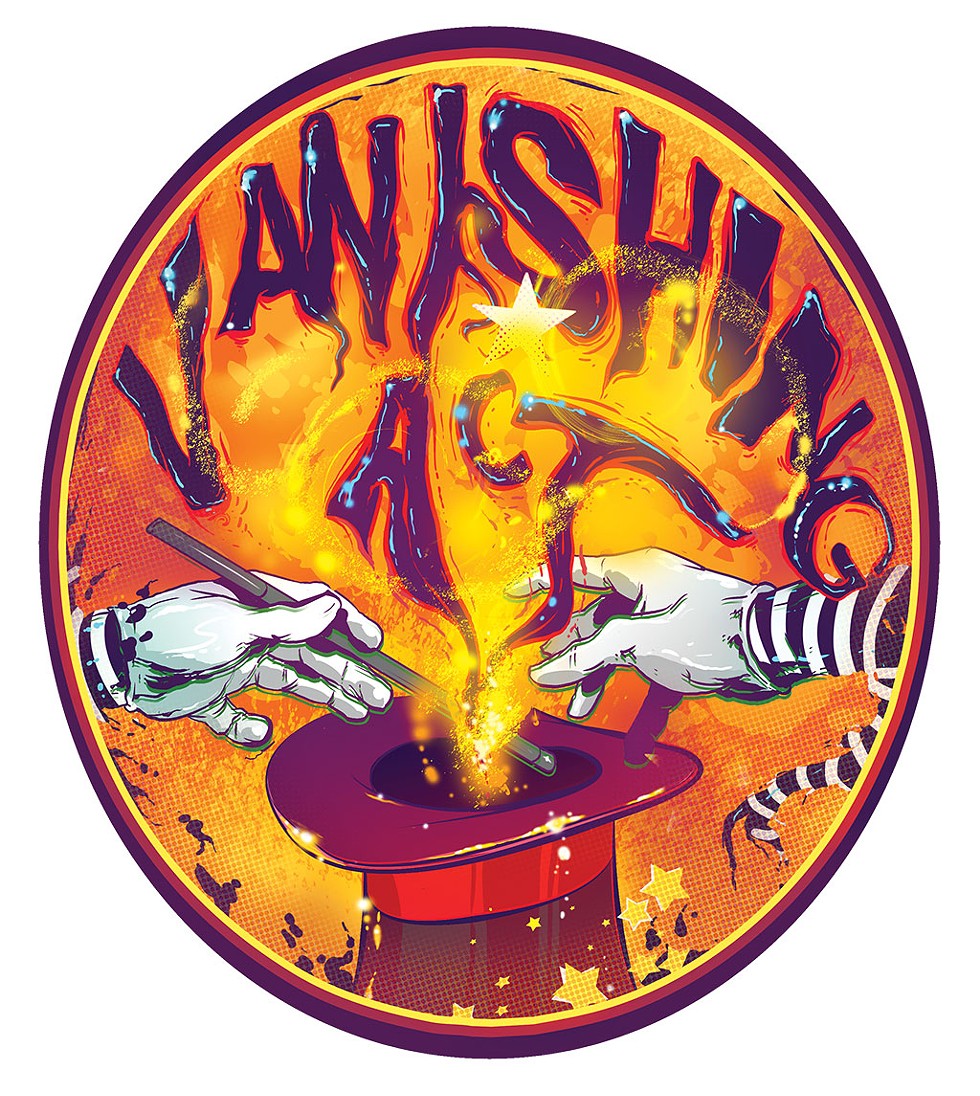
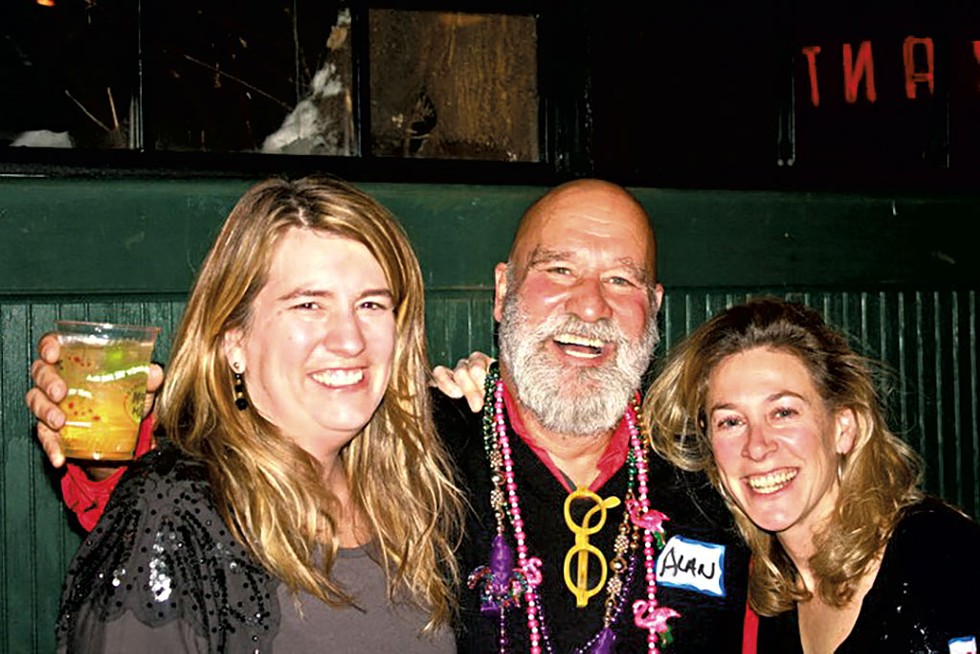
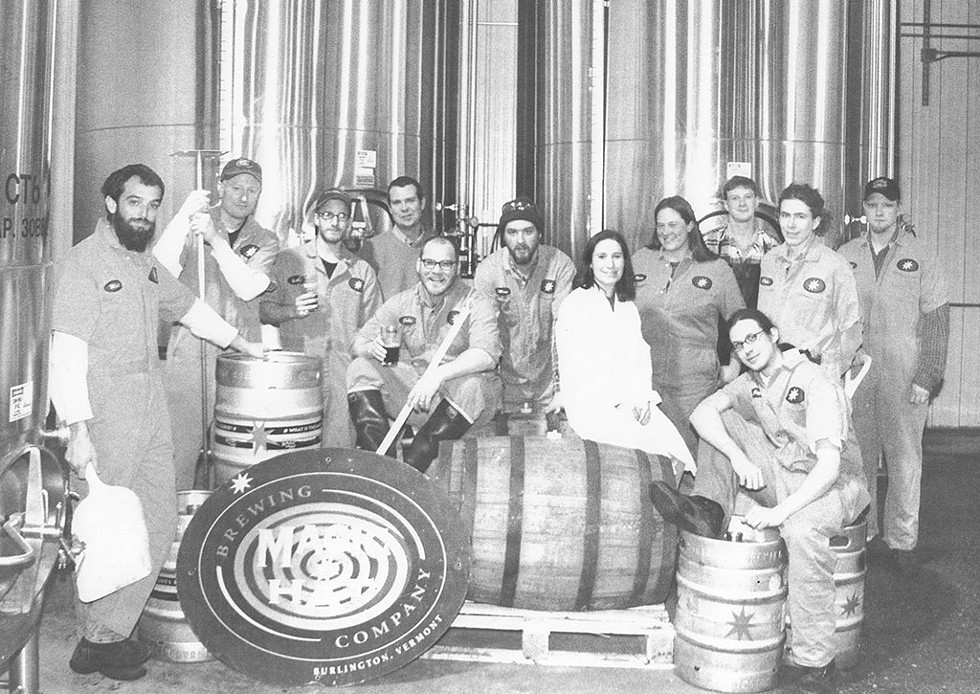
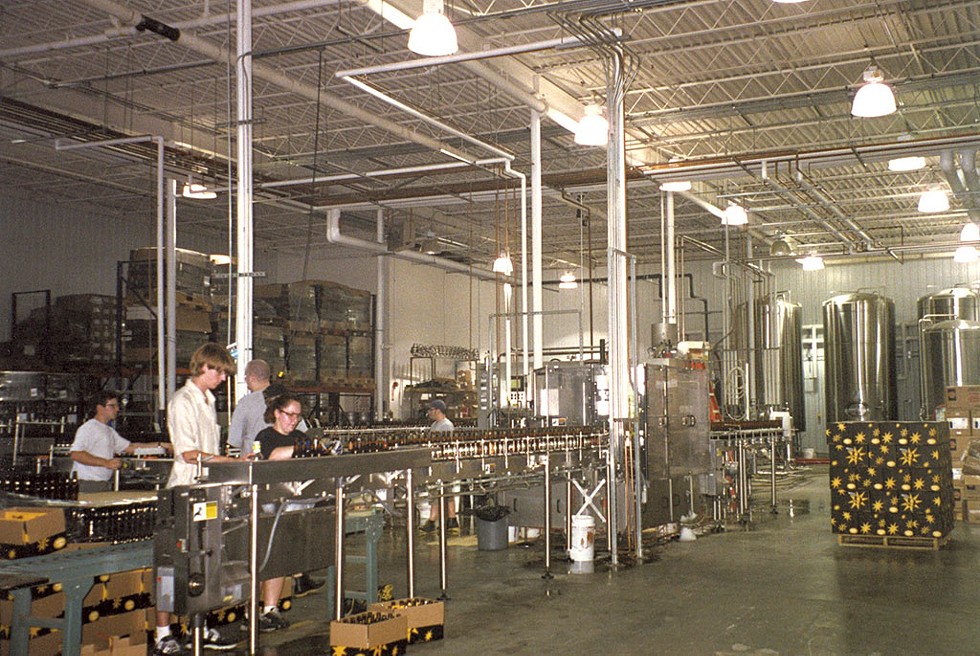
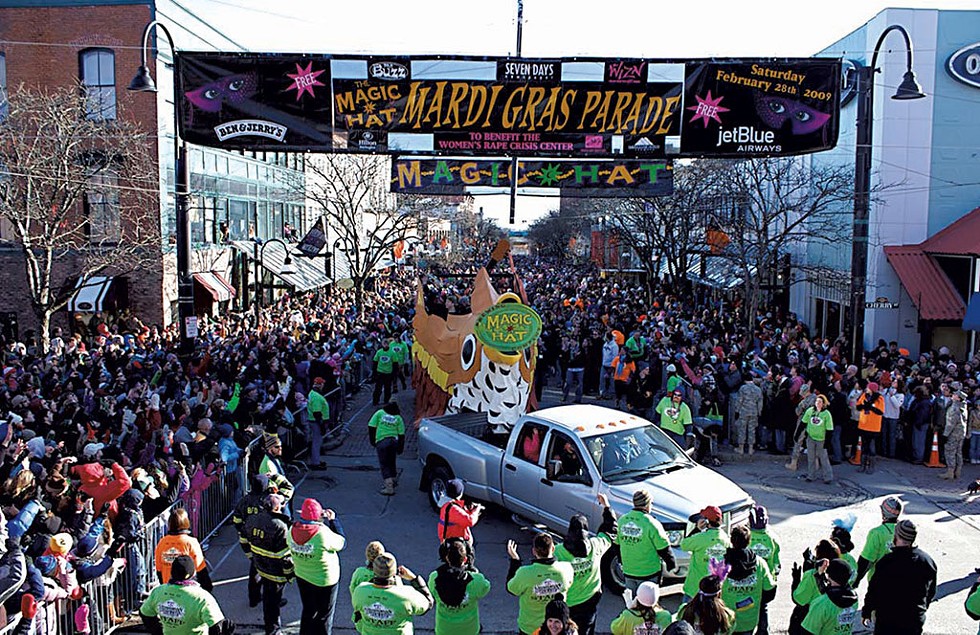
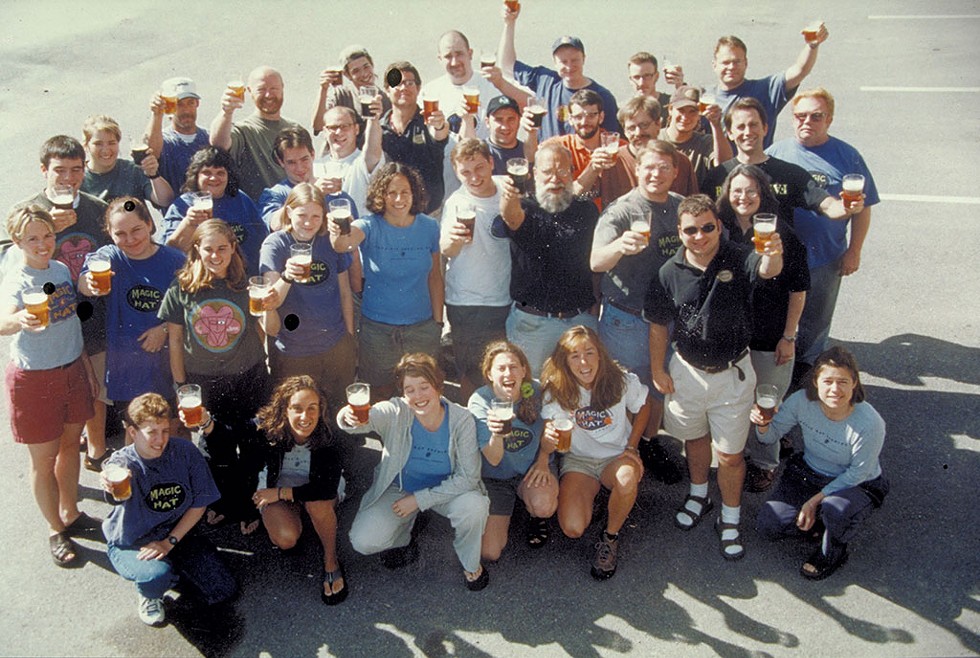
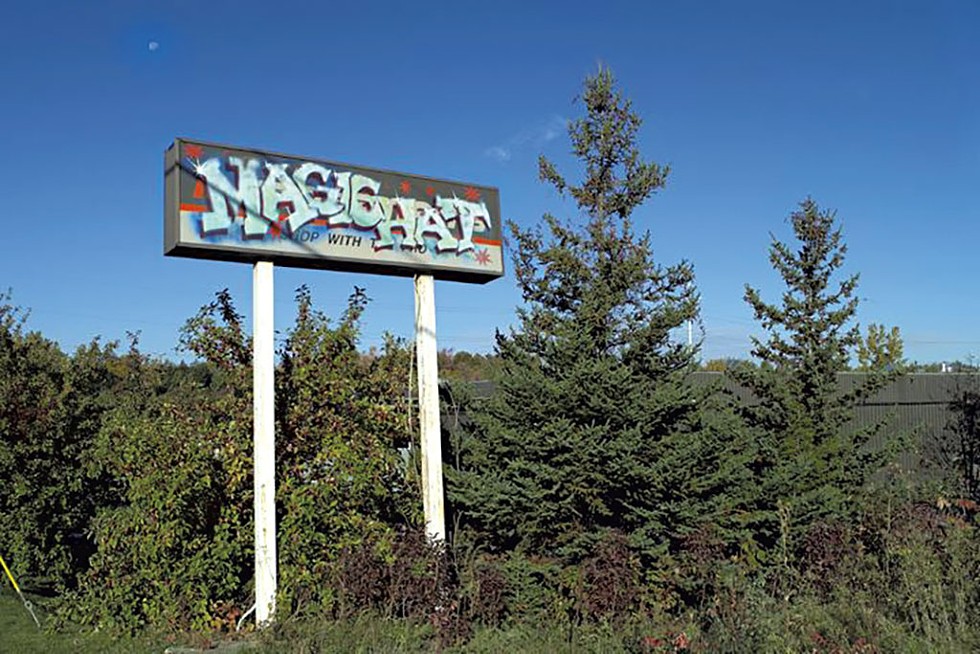
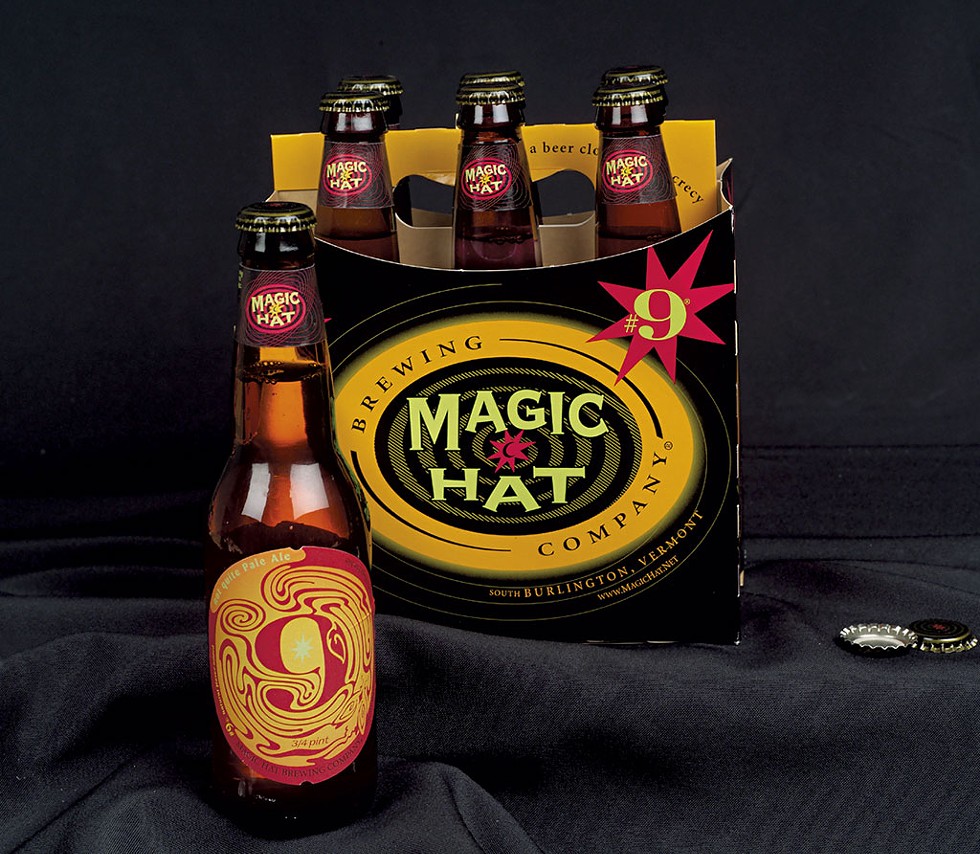
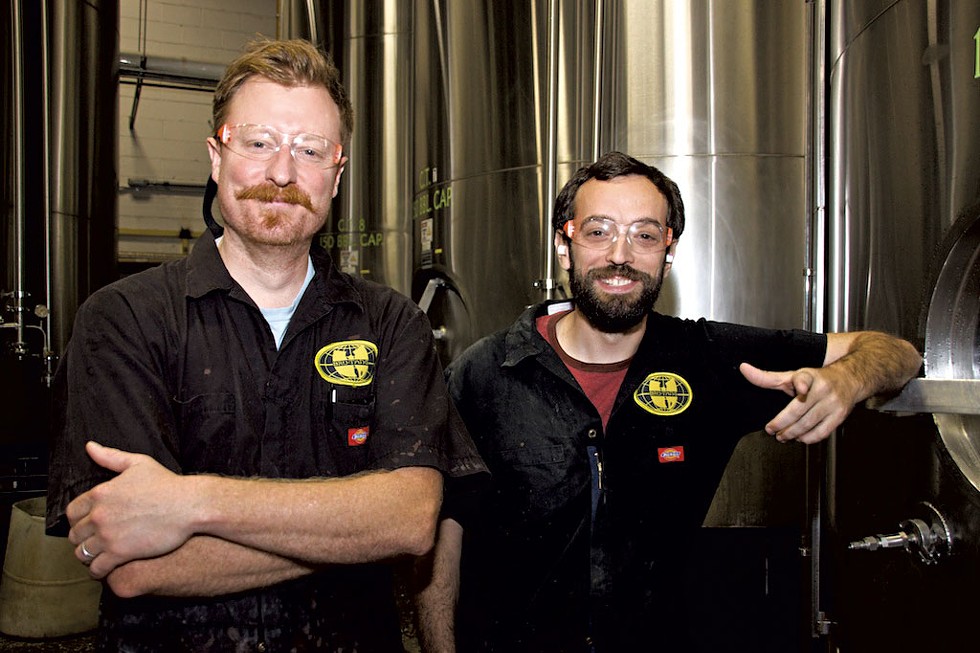
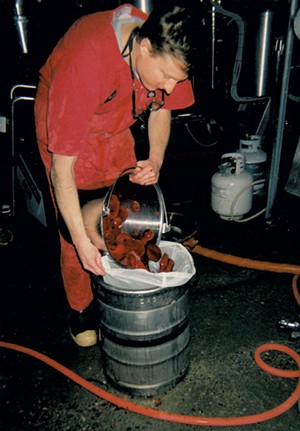


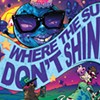
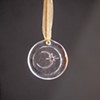







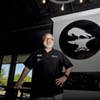
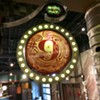

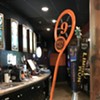
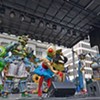
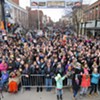
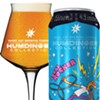
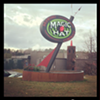

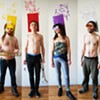




find, follow, fan us: